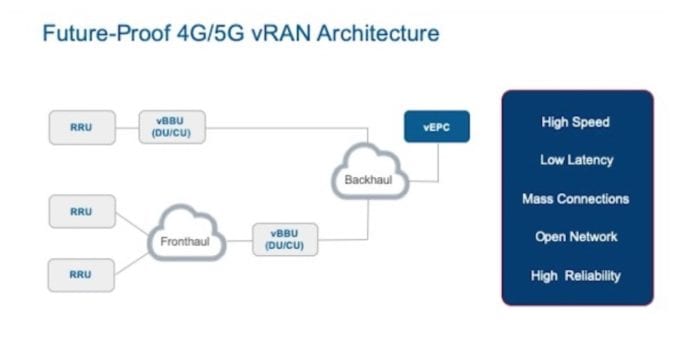Mavenir announces availability of 4G/5G open RAN solution
This week Richardson, Texas-based vendor Mavenir announced the “launch and availability” of a 4G- and 5G-compatible virtualized radio access network solution based on open interfaces developed by the O-RAN Alliance, a cross-industry group of carriers, vendors and other specialists focused on shifting network economics by taking cost out of radio equipment.
Mavenir executives, including during a recent showing at 5G Asia in Singapore, have been evangelizing the centrality of shifting network economics by de-costing RAN infrastructure to enabling successful 5G at scale as well as driving competition and innovation in a vendor environment dominated by Ericsson, Huawei and Nokia.
In an Oct. 16 statement, company CEO Pardeep Kohli pointed out that delivering this virtualized RAN solutions follows its work in virtualized VoLTE, VoWiFi, IMS core and other network functions. “Operators need alternatives to the traditional vendors, particularly in countries with restrictions, and as a U.S.-based and headquartered company we are that alternative.”
The new open RAN products allows a virtualized baseband to connect via O-RAN-based ethernet fronthaul to remote radio units. This lets an operator better optimize networks through inter-cell coordination and quickly shift capacity based on demand.
In addition to the O-RAN Alliance, the Telecom Infra Project, another consortium focused on enabling mutli-vendor networks built on general-purpose hardware rather than more expensive purpose-built equipment. Members include some of the biggest operators in the world like BT, Deutsche Telekom, Orange, Telefonica and Vodafone.
Kohli is set to speak at the upcoming TIP Summit, November 13 and 14, in Amsterdam, in a panel on “Access redefined: RAN in the real world.” That discussion also features Intel’s Caroline Chan, Parallel Wireless CEO Steve Papa, Ike Elliott of Cable Labs, Tech Mahindra’s Sarvesh Raj Sharma and Altiostar CSO Thierry Maupile. Heavy Reading’s Garbiel Brown is moderating.
Virtualized, open RAN is a continuation of a shift that has transformed evolved packet cores and will be another part of fully cloud-native, programmable 5G networks capable of delivering on-demand network slices. And it’s getting a lot of attention of operators grappling with the need to continue enhancing LTE networks, densify within their footprints, go through the generational upgrade to 5G and work with new enterprise and industrial partners to identify, develop, commercialize and make money off of 5G-enabled use cases.
In a September session with media during 5G Asia, Mavenir’s Sam Saba called out Japan’s Rakuten Mobile, an offshot of the e-commerce giant prepping to enter the market as a fourth MNO. “They’re effectively a fully open source, cloud-native network from core all the way to the access. They’re real pioneers in this space.” He said Rakuten, a Mavenir customer, is “seen as a proof point for all of this virtualization and the way we now want to change the way we’ve been building mobile networks.”
Read more on Rakuten’s strategy here.
Speaking last week at Huawei’s Global Mobile Broadband Forum in Zurich, Telefonica’s Enrique Blanco, global CTIO, discussed the importance of open RAN to the company’s network transformation strategy and stressed the importance of not just the capacity and latency gains associated with 5G but also reliability.
“We are designing and building cloud-based networks,” he said during a keynote session, calling the shift in network design “extraordinarily ambitious.” Blanco said 5G networks have to be programmable; “This is a must because we need to monitor huge growth in the data capabilities for our customers. This network needs to be open and we need to get all these capabilities.”
Blanco hit on the contrast between an LTE outage today and a 5G outage in the future. If 5G goes down, “We will be stopping society,” he said. “We will be stopping cars, hospitals, industries. This is just impossible to happen. This is a significant part of the 5G future.”
This week Telefonica Innovation Ventures announced backing of open radio access network infrastructure vendor Altiostar, which specializes in software-based, virtualized RAN equipment.
“This future is not possible through the continued deployment of traditional RAN solutions,” Ashraf Dahod, Altiostar’s CEO said in a statement. “To be successful, operators must embrace new innovative solutions that possess the openness, programmability and automation delivered through a software-defined, cloud-native platform and an open supply chain. We are honored that a global operator like Telefónica is joining us on the journey of innovation in the RAN industry through disaggregation, network virtualization and building a multi-vendor open ecosystem.”
In addition to backing from Telefonica, Altiostar has drawn investment from Qualcomm Ventures, Tech Mahindra and Rakuten.

